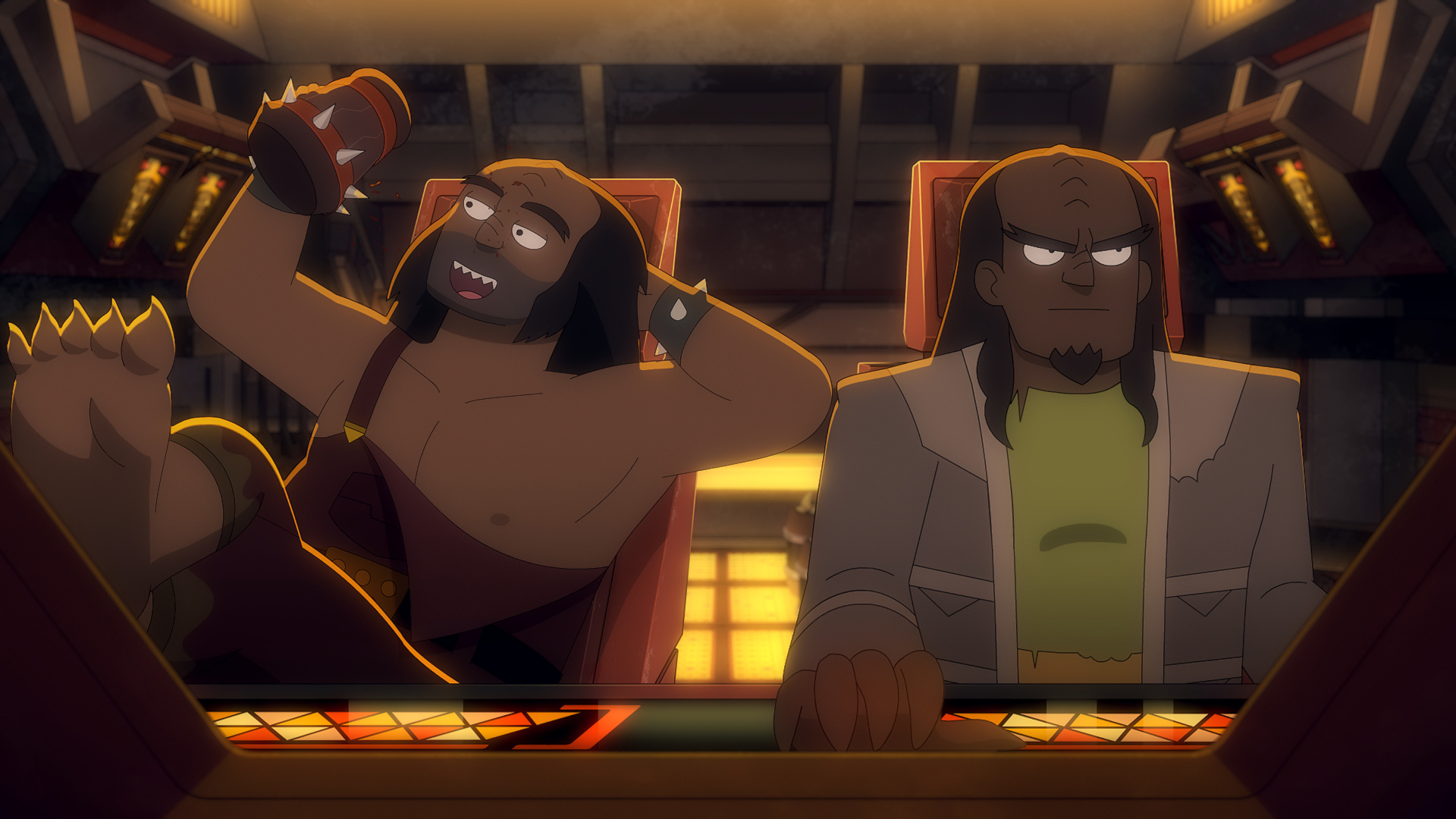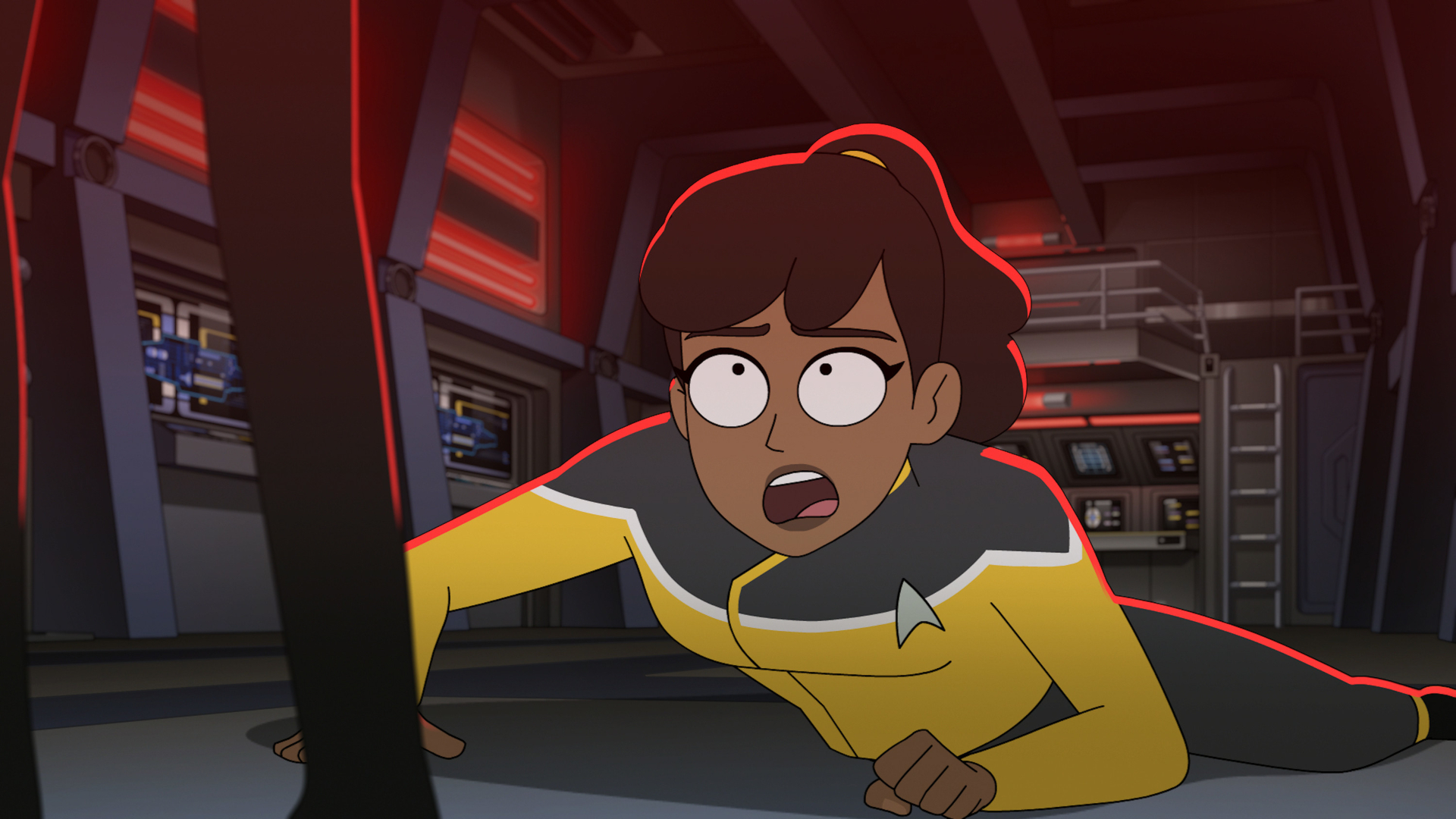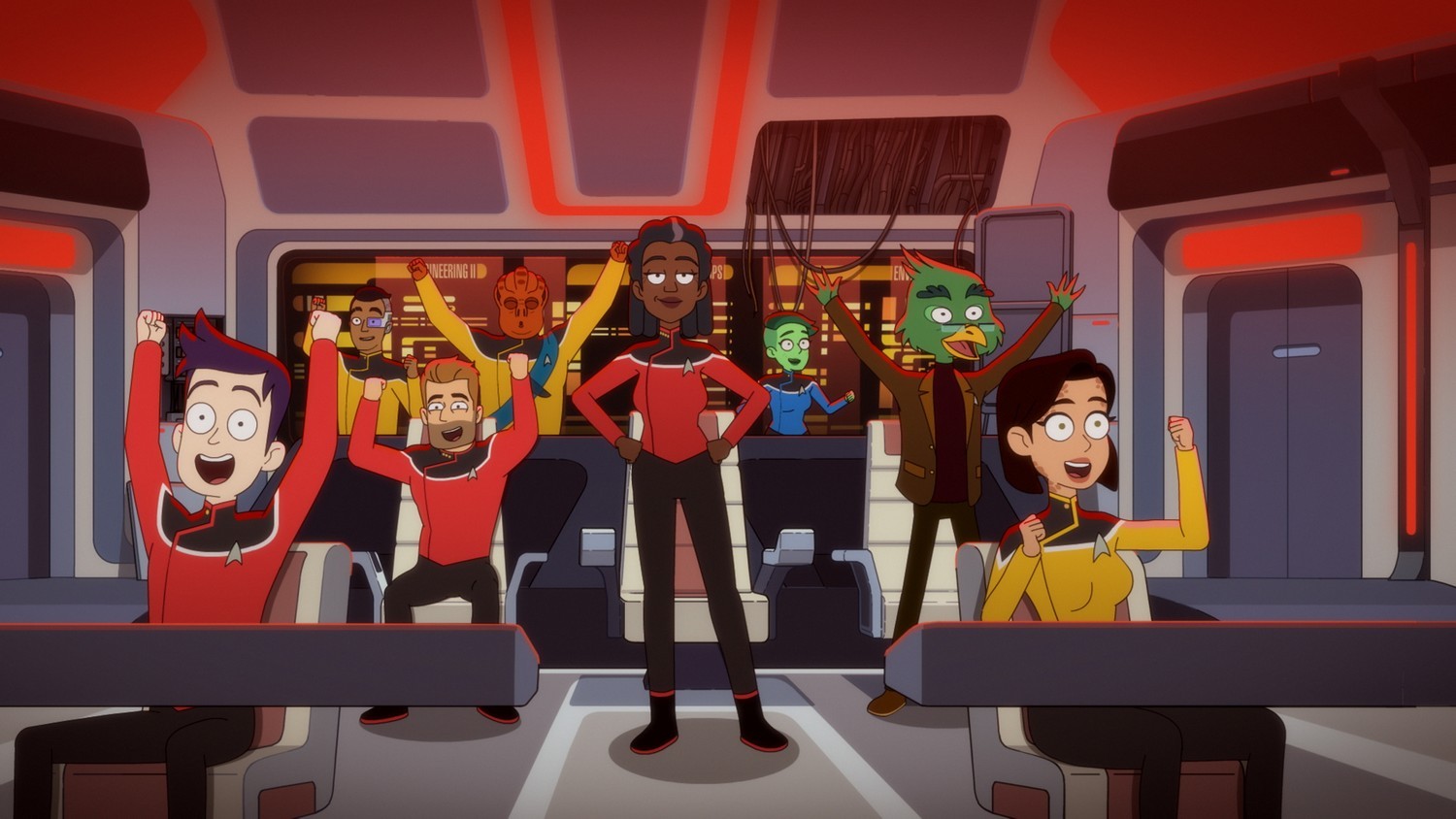“All Good Things”, “What You Leave Behind”, “Endgame”… Now “The New Next Generation” becomes the latest addition to the pantheon of memorable “Star Trek” season finales, as the franchise’s only out-and-out comedy, “Lower Decks”, goes out in style.
After last week’s multiverse-hopping adventures, the race is on to save the prime universe from a fissure in space and time that threatens to destroy existence as we know it. The episode also provides a chance for all of the lead Cerritos crewmates to shine, while sharing the spotlight with several supporting characters from earlier season 5 missions.
This series finale feels like the end of a chapter, but leaves enough intriguing loose ends to keep the possibility of a spin-off alive. (In the minds of fans, at least — it’s important to point out that Paramount+ have suggested nothing of the sort!)
Here’s a rundown of how the Cerritos becomes the unlikely savior of reality, and what this final episode means for the future of the Lower Deckers.
Spoiler warning! Caution advised if you’re yet to watch the “Lower Decks” finale
Why is the prime “Star Trek” universe under threat?
Two words: Harry Kim.
In last week’s episode, “Fissure Quest“, the USS Voyager’s perennial ensign flew the interdimensional Beagle craft into a rift in space and time, setting off a chain reaction with the potential to destroy the entire multiverse. Captains William Boimler and Lily Sloane attempted to mitigate the problem by directing destructive soliton waves into a single universe — the prime “Star Trek” timeline Boimler used to call home. Unfortunately, left unchecked, it’ll destroy this quantum reality.
William also manages to send a warning to his transporter doppelganger Bradward, whose screams of “We’re all gonna die!” are pretty restrained given the circumstances.
Saving the universe sounds like higher stakes than the Cerritos crew are used to?

Yes, it’s a far cry from the second contact situations that are traditionally Captain Freeman and co’s bread and butter. Luckily, she believes Bradward’s story about his “undead transporter clone” and is quick to alert Starfleet command to the danger.
It turns out that the fissure can be easily sealed with a “subspace gluonic beam”. The problem? Getting there requires navigating a Schrödinger possibility field (S-field) that remaps matter into other possibilities from the multiverse — one projection predicts a Starfleet officer with a cactus for a head.
On any other day Starfleet wouldn’t have nominated a California class vessel like the Cerritos for such an important mission, but the Enterprise can’t make it in time. Besides, whether it’s “fate or entanglement”, the connection between the two Boimlers makes the Cerritos the logical candidate for the mission.
Frankly, on days like these, the last thing you want is a pair of Klingon blood wine merchants arriving on your doorstep looking for protection from an unhinged Bird-of-Prey commander who wants them both dead…
Why does Relga have such a problem with Ma’ah?

While Klingon commander Relga is spoiling for a fight with anyone she can find, she’s also out for revenge on Ma’ah for killing her two brothers.
We first met Ma’ah when he was a Lower Decker on the Klingon vessel the Che’Ta’ in “wej Duj” (season 2), under the command of Dorg, one of Relga’s brothers. Ma’ah called out Dorg for his dishonorable behavior towards the Federation, and ended up killing his captain when they settled their dispute the old-fashioned Klingon way. He was then promoted to captain, but later betrayed by his crew, who abandoned him on Sherbal V, where he met (and befriended) Beckett Mariner (“The Inner Fight”, season 2). Although he eventually got his ship back, he was dishonorably discharged for allowing his crew to seize control in the first place.
The oversight council that made the decision was not entirely impartial, however, seeing its membership included another of Relga’s brothers, Bargh. Having gone home to work on the family blood wine farm (“A Farewell to Farms“, season 5), Ma’ah initiated the Rite of Forced Conscription to regain his commission. In the inevitable Klingon fight to the death, he ended up killing Bargh — who had, to be fair, figuratively and literally stabbed him in the back.
Ma’ah subsequently went back into business with his brother Malor, and it’s on a delivery run that they run into Relga, prompting them to ask for asylum on the Cerritos. Their pursuer has little interest in hearing about her siblings’ misdemeanors, of course, and demands that Captain Freeman hand them over.
What happens in the Schrödinger possibility field?

“All hands brace for weird,” says Captain Freeman, and it’s a pretty good summary of what to expect in an S-Field. In fact, it should probably have been named after “The Hitchhiker’s Guide to the Galaxy” author Douglas Adams, seeing as the phenomena it creates are remarkably similar to the freaky side-effects associated with the Infinite Improbability Drive that powered the Heart of Gold.
During the episode’s cold open, one of Relga’s Birds-of-Prey becomes the first to experience the S-Field’s freaky destructive power when the crew and their vessel get a makeover in line with the Klingons in “Star Trek: Discovery”‘s first season.
Adjusted shield harmonics on the Cerritos — which Freeman shares with Relga as a courtesy — offer some protection, but the California class ship still goes through a rapid sequence of refits, briefly taking the form of:
- A Freedom class vessel with a single warp nacelle (like the USS Firebrand in “The Next Generation” episode “The Best of Both Worlds”)
- A Terran Empire ship (“By the prophets, our weapons are amazing!” says Shaxs, who sadly doesn’t get to use them)
- A Sovereign class vessel (like the USS Enterprise-E in the “TNG” movies)
- An Oberth class vessel (like the USS Grissom in “The Search for Spock”)
- A Galaxy class vessel (like the USS Enterprise-D in “The Next Generation”)
- A Miranda class vessel (like the USS Reliant in “The Wrath of Khan”)
- Several others that don’t appear on screen
The Klingon ships, meanwhile, remain comparatively unchanged — presumably, as Dr T’Ana suggests, because their designs have been the same for decades: “They always want their ships to look like big stupid birds.”
Luckily — in another hat tip to Dr T’Ana — there is a “sneaky underhanded Kirk-style trick we can use to f**k her up like they did in the old days”, as demigod Ensign Olly (introduced in “Of Gods and Angles“, season 5) fires a lightning bolt to disable Relga’s shields. The next Schrödinger shock wave causes them to devolve into “mindless proto-Klingons filled with rage”, and their ship is destroyed.
How does the Cerritos close the rift?

Teamwork. While California class ships are fairly out of date by Starfleet standards, Rutherford realizes their versatile functionality is a virtue, and — after ditching his implant to unleash some super-fast engineering — diverts the rift’s energy into the Cerritos’s dilithium chamber. In effect, the fissure is now powering the ship.
Then, when the Cerritos bifurcates into two quantum possibilities, each one controlling the other, co-science leads Tendi and T’Lyn go into anime-mode to unite as “science besties”, bringing the decoupled ships back together.
Alas, when they get within range of the fissure, the gluonic beam doesn’t close the rift as it should, so Malor suggests building a dam to contain the energy. The plan is a success, but it leaves the now-stable rift in a permanently open state.
What does this mean for the future of the “Lower Decks” characters?

Paramount+ has already confirmed that “Lower Decks” season 5 will be the show’s last, but this finale opens up plenty of opportunities for a spin-off — just as “Star Trek: Picard” left the turbolift doors open for the as-yet-unconfirmed “Star Trek: Legacy” follow-up, featuring Seven-of-Nine as captain of the rebranded USS Enterprise-G.
There are definite “Deep Space Nine” vibes to the new set-up. In “DS9”, the eponymous space station was the gatekeeper for the newly-opened Bajoran wormhole that provided a route to the Gamma Quadrant. Starbase 80 — whose retro design makes it impervious to the rift’s tachyon emissions — is poised to fulfill a similar role on the doorstep of this new portal to parallel universes. Carol Freeman gets a Benjamin Sisko-like gig as rift overseer, and a show that targets the multiverse rather than a single universe could be a new frontier for the franchise.
Back on the Cerritos, meanwhile, the Lower Deckers have all risen to key positions on the bridge — most notably Mariner and Boimler, who are newly promoted Captain Ransom’s picks as provisional first officers. Even though the dynamic on board will have shifted, there’s still potential to spend more time with a crew who embrace the fact they’re not the best Starfleet has to offer. “This isn’t the end of the story,” says Mariner at the end of the episode. “It’s the beginning.” You can’t help hoping that’s true — not least because Tendi and Rutherford surely have to get together soon.
Every episode of “Star Trek: Lower Decks” is available to watch on Paramount+.
